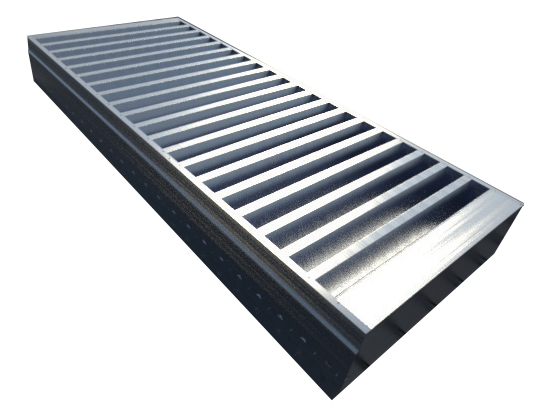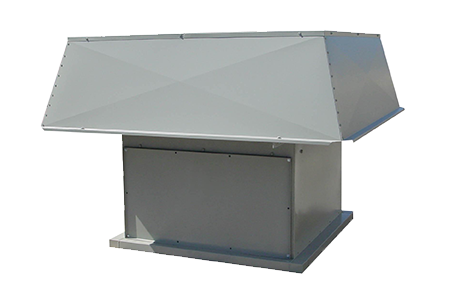Natural Ventilation vs Power Exhaust Ventilation
Power Exhaust Ventilation vs. Natural Ventilation is the big question when it comes to ventilating an industrial space. On the one hand you have a powered solution that moves hot air with great force. Nothing says ventilation like a bunch of fans whirring on non-stop on the roof. On the other hand, you have a passive ventilator that requries no energy or mainteance, and works silently and effectively. This post will compare natural ventilation and power exhaust ventilation.
Natural Ventilation

Ventilation has been in use since the first person sought shelter in a cave. That caveman quickly learned that proper ventilation is needed to prevent stagnant air, remove moisture, and maintain comfortable temperatures. Fortunately, the oldest form of ventilation still works.
Using a natural ventilator on the roof and intake wall louvers near the ground is a tried and true way to improve air-flow in any building. Furthermore, natural ventilation requires no energy and little mainteance. That is why it’s such an attractive option to those looking to save on power costs.
Power Exhaust Ventilation

Unlike natural ventilation, which relies on gravity to evacuate hot air, fans forcibly pull air out of the building. For instance, an industrial exhaust fan spins to remove the hot air through the top of the building.
This fan removes air with more force, and at a greater speed, then an natural ventilator. Power exhaust fans are very effective at increasing airflow in certain buildings. This includes buildings with moderate heat levels or in buildings with average roof heights.
Consider Your Power Exhaust Ventilation Needs
Moffitt has been helping customers improve air flow for over sixty years. With a wide variety of power exhaust ventilators, natural ventilators, and fans, we can find the right solution for you.
Contact Us today to learn How Power Exhaust Ventilation May Be the Solution for Your Plant.
